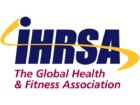Updated September 18, 2020
Kilian Fisher, IHRSA International Public Policy Advisor, and Carolynn Jordan, IHRSA Member Communication Specialist, contributed to this article.
You’ve likely reconsidered your financial strategy many times in the last few months, and as you reopen, you’ll need to take an even closer look. This list will help you navigate the new normal.
Updated September 18, 2020
Kilian Fisher, IHRSA International Public Policy Advisor, and Carolynn Jordan, IHRSA Member Communication Specialist, contributed to this article.
The COVID-19 pandemic has drastically changed the fitness industry as we know it. The financial impact to clubs across the world has been massive. As countries slowly begin the process of recovering from this global pandemic, health clubs are among the first businesses allowed to reopen in some areas. As a health club operator, you’ve likely reconsidered your financial strategy many times in the last few months. With many countries reimposing closures nationally or locally, it is even more critical to prepare a number of ongoing scenarios so you are prepared for all eventualities.
We’ve put together lists of items you should consider under three areas:
Our hope is that these lists will help you navigate your financial strategy when opening your business following COVID-19 closures.
In the uncharted territory of post-pandemic operations, there will still be many changes ahead. Keeping your financial strategy in line is one way you can maintain control of your business. We hope this list will help get you back on track as you face potential ongoing restrictions/further closures and navigate a new normal.
Located in the U.S.? Learn more about future savings with IHRSA’s Group Purchasing Program.

This article was a team effort by several IHRSA experts.